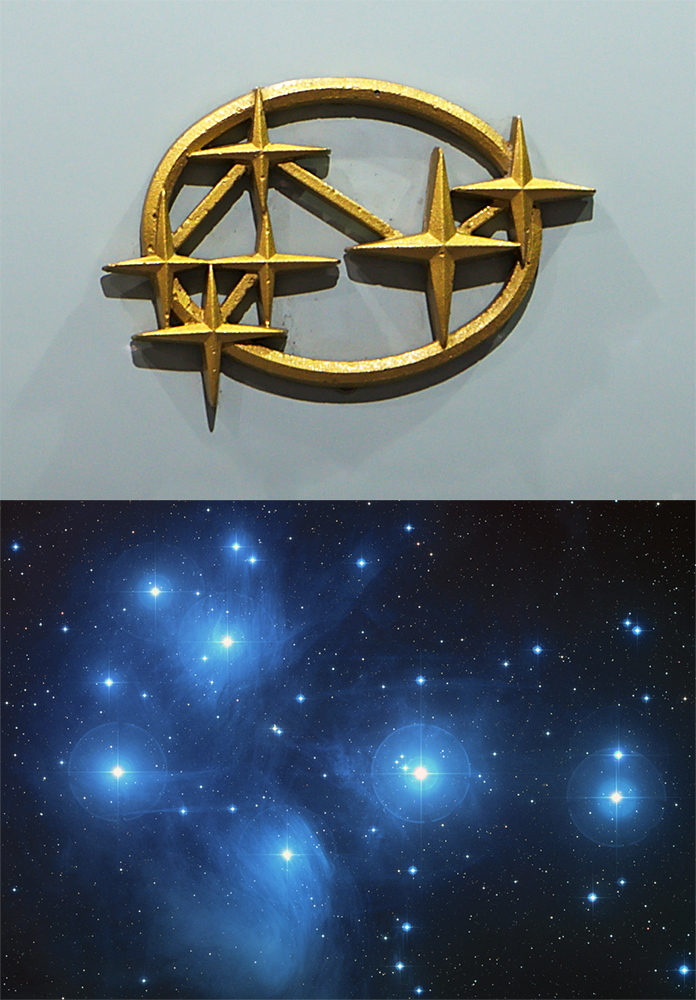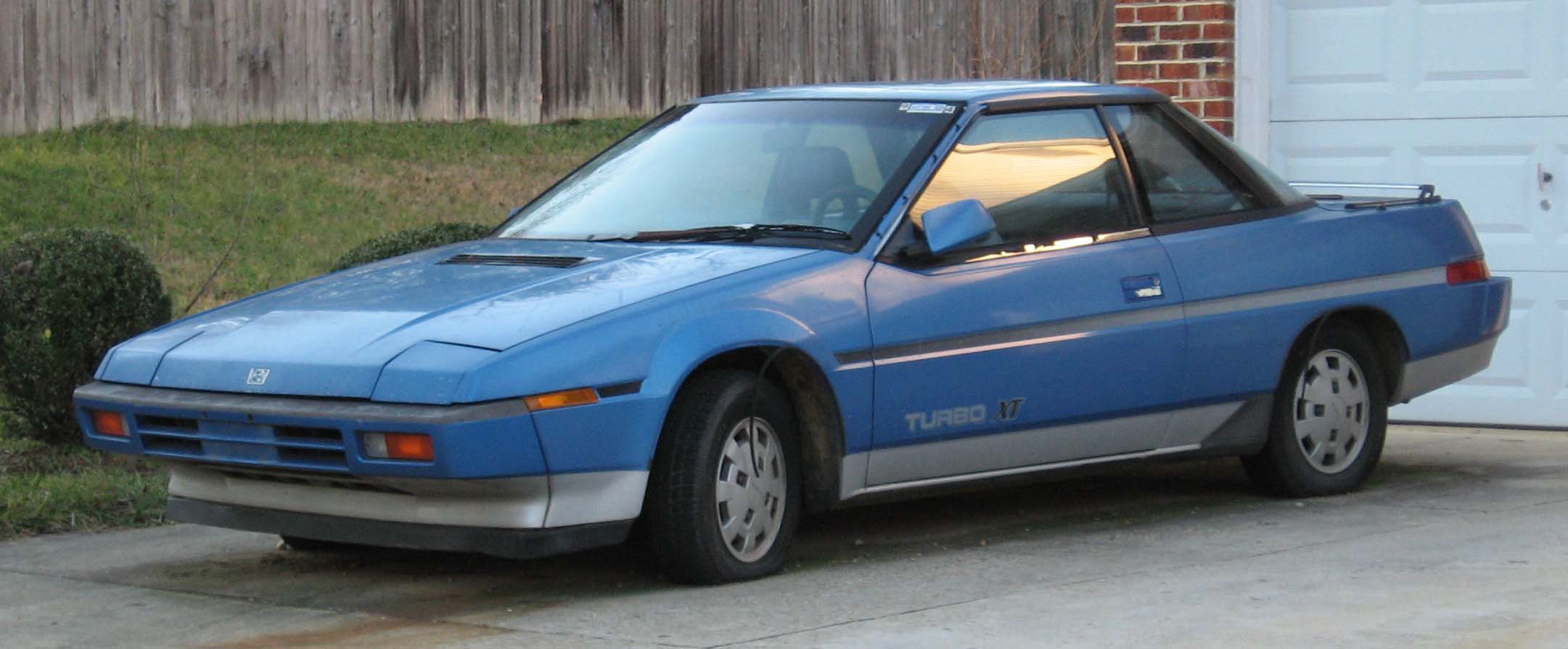|
Subaru Legacy (first Generation)
The first generation Subaru Legacy is a mid-size family car / wagon developed by Fuji Heavy Industries. The Legacy was an all new model, and was considered a notable departure from Subaru products in the past. History The worldwide introduction of the Legacy sedan and wagon was achieved in 1989. The earlier sedan and wagon are becoming more rare and collectables especially the earlier wagons. Subaru had earned a reputation of building vehicles that were regarded as "quirky" while other Asian manufacturers were bringing more upscale and conventional appearing models to the market. The Legacy was different and became a solid production that changed Subaru's reputation. The Legacy appeared at the same time as the US introduction of Lexus and Infiniti and five years after Acura, and it was interpreted by some as Subaru's attempt at participating in the emerging imported luxury car market. However, Subaru did not have a V6 or V8 engine. The Legacy was more automotive aerodynamic than ... [...More Info...] [...Related Items...] OR: [Wikipedia] [Google] [Baidu] |
Subaru
( or ; ) is the automaker, automobile manufacturing division of Japanese transportation conglomerate (company), conglomerate Subaru Corporation (formerly known as Fuji Heavy Industries), the Automotive industry#By manufacturer, twenty-first largest automaker by production worldwide in 2017. Subaru cars are known for their use of a flat engine, boxer engine layout in most vehicles above 1,500 cc. The Symmetrical All Wheel Drive drive-train layout was introduced in 1972. Both became standard equipment for mid-size and smaller cars in most markets by 1996. The lone exception is the Subaru BRZ, BRZ, introduced in 2012 via a partnership with Toyota, which pairs the boxer engine with rear-wheel-drive. Subaru also offers turbocharged versions of their passenger cars, such as the Subaru WRX, WRX, Subaru Legacy, Legacy and Subaru Outback, Outback XT, Subaru Ascent, Ascent, and formerly the Subaru Legacy, Legacy GT and Subaru Forester, Forester XT. In Western markets, Subaru vehi ... [...More Info...] [...Related Items...] OR: [Wikipedia] [Google] [Baidu] |
Subaru Legacy (second Generation)
The second-generation Subaru Legacy was marketed in Japan from October 1993, and July 1994 marked the second generation in North America with a full body and chassis revision. The exterior was designed by Olivier Boulay in 1991, during his tenure at Subaru. The tail light appearance on both the sedan and wagon was influenced by the taillights on the SVX. North American models The North American Legacy Outback wagon was released in July 1994 and FWD was standard from 1994 to 1995. AWD was first offered in 1995 and was so popular that in 1996, Subaru decided to make AWD standard equipment in all vehicles produced for the North American market from that year to today's current date, excluding the Subaru BRZ. 30th Anniversary Edition (1999) The 30th Anniversary Edition was a limited production version commemorating the 30th anniversary of Subaru in America. It included upgraded interior and sunroof, spoiler, and alloy wheels on the "L" trim level cars. Japanese models Subaru still ... [...More Info...] [...Related Items...] OR: [Wikipedia] [Google] [Baidu] |
Subaru XT
The Subaru XT was a four-passenger, 2-door coupé manufactured and marketed by Subaru for model years 1985-1991, with a facelift in 1987. Assembly took place at Subaru's Yajima Plant in Ota, Japan and during its single generation, production reached just over 98,000. The XT was noted for its pronounced wedge shape, its uncommonly low coefficient of drag; its aviation influences from the aircraft division of parent company Fuji Heavy Industry; and its host of features, either innovative or uncommon in the XT's class — including adjustable pneumatic suspension, digital dash, central locking system, op-art upholstery, pod- and center console-mounted HVAC controls, advanced trip computer, and instrument cluster that tilted with adjustment of the steering column. The XT launched in February 1985 in the American market, followed by a June debut in Japan. It was marketed as the Alcyone in Japan, the Vortex in Australia and New Zealand — and as the XT (with the EA-82 four- ... [...More Info...] [...Related Items...] OR: [Wikipedia] [Google] [Baidu] |
Subaru Leone
The Subaru Leone is a compact car produced by the Japanese car manufacturer Subaru from 1971 to 1994. The word ''leone'' is Italian for lion. It was released as a replacement for the Subaru 1000 and was the predecessor of the Subaru Impreza. All Leones were powered by the Subaru EA boxer engine. Most cars were equipped with optional four-wheel drive. At the time of its introduction, the Leone was Subaru's top model until 1989, when the larger Legacy was introduced. Although released in Japan and some export markets as the Leone, for many years, this was the only vehicle sold internationally by Subaru where the smaller kei cars Rex, Vivio, R-2, 360, and Sambar were not commonly sold. As a result, in major markets such as Australia, Europe and North America, it was instead identified with a trim level designation, some of which included: DL, GL, GLF, GLF5, GL-10, and RX. The car is thus often referred to simply as the Subaru GL or the Subaru L series. First Generation ... [...More Info...] [...Related Items...] OR: [Wikipedia] [Google] [Baidu] |
Lug Nut
A lug nut or wheel nut is a fastener, specifically a nut, used to secure a wheel on a vehicle. Typically, lug nuts are found on automobiles, trucks (lorries), and other large vehicles using rubber tires. Design A lug nut is a nut fastener with one rounded or conical (tapered) end, used on steel and most aluminum wheels. A set of lug nuts is typically used to secure a wheel to threaded wheel studs and thereby to a vehicle's axles. Some designs (Audi, BMW, Mercedes-Benz, Saab, Volkswagen) use lug bolts or wheel bolts instead of nuts, which screw into a tapped (threaded) hole in the wheel's hub or brake drum or brake disc. The conical lug's taper is normally 60 degrees (although 45 degrees is common for wheels designed for racing applications), and is designed to help center the wheel accurately on the axle, and to reduce the tendency for the nut to loosen due to fretting induced precession, as the car is driven. One popular alternative to the conical lug seating design is th ... [...More Info...] [...Related Items...] OR: [Wikipedia] [Google] [Baidu] |
Citroën GS
The GS is a front-engine, front-drive, four or five door, five passenger family car manufactured and marketed by Citroën in two series: for model years 1970-1979 in fastback saloon and estate bodystyles and subsequently as the GSA for model years 1980-1989 in hatchback and estate body styles — the latter after a facelift. Combined production reached approximately 2.5 million. Noted for its aerodynamic body shape with a drag coefficient of 0.318, fully independent hydro-pneumatic brakes and self-levelling suspension, and air-cooled flat-four engine, the GS was styled by Robert Opron, with a low nose, a two-box silhouette, semi-enclosed rear wheels and a sharply vertical Kamm-tail. When the GS was named the European Car of the Year for 1971, the design was noted as technologically advanced, with class leading comfort, safety and aerodynamics. Market placement The GS filled the gap in Citroën's range, between the 2CV and Ami economy cars and the luxurious DS ex ... [...More Info...] [...Related Items...] OR: [Wikipedia] [Google] [Baidu] |
Subaru 1000
The Subaru 1000 is the first and only front wheel drive Subaru produced by Fuji Heavy Industries that was in the Japanese government "compact car" classification starting in 1966. Previous Subaru models such as the Subaru 360 and the Sambar had been rear-engined, rear wheel drive kei cars. It was the first production Subaru to use a boxer engine, and one of Japan's first front wheel drive cars. History Prototype Subaru A-5 In 1962, Subaru management decided to introduce a successor to the prototype Subaru 1500 with a code name A-5. The engine was technologically advanced for the time; the experimental EA51X was a Otto cycle, overhead camshaft, air-cooled, horizontally opposed four-cylinder engine displacing 980 cc driving the front wheels in a compact car platform. It was to have a double wishbone front suspension. Due to FHI's limited resources, the car was not produced. The Subaru 360 was selling only in Japan at the time but Subaru wanted a car that could comfortably carr ... [...More Info...] [...Related Items...] OR: [Wikipedia] [Google] [Baidu] |
Spare Tire
A spare tire (or stepney in some countries) is an additional tire (or tyre - see spelling differences) carried in a motor vehicle as a replacement for one that goes flat, has a blowout, or has another emergency. ''Spare tire'' is generally a misnomer, as almost all vehicles actually carry an entire wheel with a tire mounted on it as a spare rather than just a tire, as fitting a tire to a wheel would require a motorist to carry additional, specialized equipment. However, some spare tires ("space-saver" and "donut" types) are not meant to be driven long distances. Space-savers have a maximum speed of around . When replacing a damaged tire, placing the compact spare on a non-drive axle will prevent damage to the drivetrain. If placed on a drivetrain axle, the smaller-diameter tire can put stress on the differential causing damage and reducing handling. History The early days of motor travel took place on primitive roads that were littered with stray horseshoe nails. Punctures (f ... [...More Info...] [...Related Items...] OR: [Wikipedia] [Google] [Baidu] |
1989 Subaru Liberty (BFB) GX 4WD Station Wagon (2015-08-07) 02
File:1989 Events Collage.png, From left, clockwise: The Cypress structure collapses as a result of the 1989 Loma Prieta earthquake, killing motorists below; The proposal document for the World Wide Web is submitted; The Exxon Valdez oil tanker runs aground in Prince William Sound, Alaska, causing a large oil spill; The Fall of the Berlin Wall begins the downfall of Communism in Eastern Europe, and heralds German reunification; The United States United States invasion of Panama, invades Panama to depose Manuel Noriega; The Singing Revolution led to the independence of the Baltic states of Estonia, Latvia, and Lithuania from the Soviet Union; The stands of Hillsborough Stadium in Sheffield, Yorkshire, where the Hillsborough disaster occurred; 1989 Tiananmen Square protests and massacre, Students demonstrate in Tiananmen Square, Beijing; many are killed by forces of the Chinese Communist Party., 300x300px, thumb rect 0 0 200 200 1989 Loma Prieta earthquake rect 200 0 400 200 World Wi ... [...More Info...] [...Related Items...] OR: [Wikipedia] [Google] [Baidu] |
_LX_2WD_sedan_(2011-06-15)_01.jpg)








